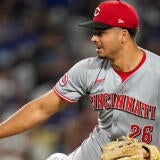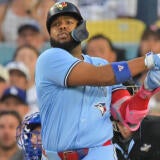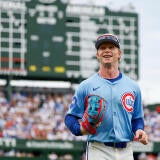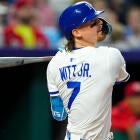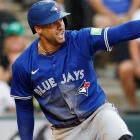Fantasy Baseball: What to make of five surprising rookie hitters, from Jakob Marsee to Isaac Collins
Other surprise rookies include Colson Montgomery, Luke Keaschall and Warming Bernabel
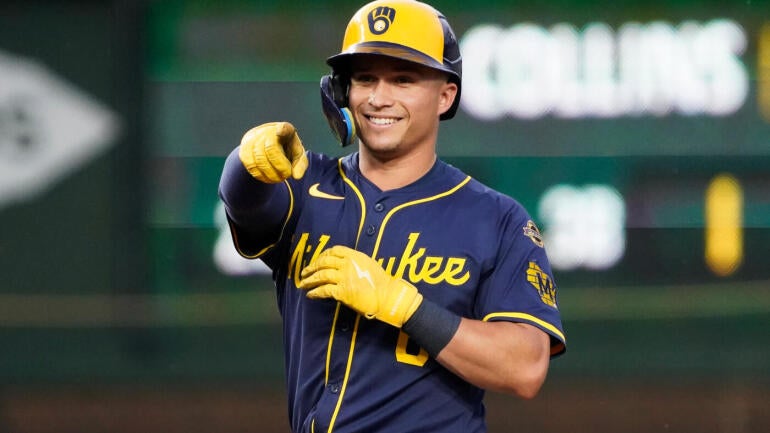
One of my guiding principles over the past couple years -- and I'm sure you've heard me say it elsewhere -- is that it takes about two months for a newly promoted hitter to find his footing in the majors.
That hasn't always been the case, and I wouldn't say it's universally true even now. But it applies even (and especially) to the most high-end hitting prospects, whether that's Bobby Witt and Julio Rodriguez in 2022, Gunnar Henderson in 2023, or Jackson Chourio and Jackson Merrill last year. Nick Kurtz didn't need two months this year, but he was slashing just .208/.259/.299 after about a month in the big leagues. It takes time.
So how do I explain guys like Jakob Marsee and Luke Keaschall coming up and wreaking havoc right away? Or even if you're plugged into the prospect scene enough to have heard of them, I'll bet you didn't see Isaac Collins coming.
Well, I can offer up two explanations:
- The intricacies of player development are too slippery to boil down to a formula.
- There's a fair amount of fakery afoot.
The irony is that No. 1 makes No. 2 impossible to say with real certainty, and for the purposes of playing the waiver wire, it's academic anyway. You have a narrow window to act on a standout performer, so provided you have a use for him, you sort of have to move first and ask questions later.
But in case you haven't made that move yet and want my best approximation of what you're getting into, I've taken five of the rookie hitters generating the most headlines right now and rated them on two factors:
- Their utility for both 5x5 and points scoring if they indeed prove to be legitimate
- Their likelihood of being legitimate
These ratings are on a 1-4 scale, as depicted by these fun baseball icons ⚾. I write about baseball, you see.
| ||||||||||||
Utility in 5x5 scoring: ⚾⚾⚾1/2
Utility in points scoring: ⚾⚾⚾
Confidence in legitimacy: ⚾1/2
Jakob Marsee consistently ranked among the minor-league leaders in walks and stolen bases in his four years there and wasn't a zero for power either, but he never earned high marks from prospect evaluators. This is partly because of poor exit velocity readings and partly because of the tumble his batting average took in 2024 -- one that carried over into 2025. Clearly, he figured something out leading up to his promotion, though, because in his final 40 games at Triple-A, he slashed .319/.424/.625. So far in his short time in the majors, he's shown the same elite batting eye and the same inclination to run, two traits that will help him excel in opposing formats provided there's enough juice in his bat to keep major league pitchers respectable rather than spamming the strike zone mercilessly. That's always the fear with this profile. Marsee won't sustain his current 92.8 mph average exit velocity in the majors -- he doesn't peak high enough for that -- but we can hope that his penchant for pulling the ball in the air will allow his power to play beyond his pure thump, as it did in the minors.
| ||||||||||||
Utility in 5x5 scoring: ⚾⚾⚾
Utility in points scoring: ⚾⚾⚾1/2
Confidence in legitimacy: ⚾⚾1/2
Luke Keaschall is one of just two rookies depicted here (Colson Montgomery being the other) who placed in all of the preseason top 100 rank lists, which partly explains the higher legitimacy rating. It can only be so high given that he's played in just 12 major league games, but I broadly buy into the skill set. Like Marsee, his penchant for walks and inclination for stealing bases should make up for his shortcomings in the power department. Unlike Marsee, there's a little more hope for him in that regard. He's already put two balls over the fence (to go along with three doubles) in five games since returning from a fractured forearm, going 10 for 22. That he's come back from that extended absence having just as much success as before it makes the outcomes feel more durable, like he isn't just riding some hot streak or catching the league by surprise. He could stand to hit the ball harder, yes, but he offers such a broad skill set with so much growth potential at age 22 that I'm tempted to do reckless things for him.
| ||||||||||||
Utility in 5x5 scoring: ⚾⚾1/2
Utility in points scoring: ⚾⚾1/2
Confidence in legitimacy: ⚾⚾1/2
Of all the players on this list, Isaac Collins has kept it going the longest, which should itself inspire confidence. What doesn't inspire confidence is that he's a 28-year-old in his rookie season. Why did it take so long for him to get his chance? Truthfully, though, I'm not seeing much to nitpick in his profile. His average exit velocity is below average (29th percentile), but his line drive and pull-air rates are so high that you would expect him to outperform that number. Those rates aren't always the stickiest, but they were just as good at Triple-A last year, making them easier to buy into. Meanwhile, his 71st percentile max exit velocity shows he can put a charge in the ball when it's on a tee for him. His plate discipline is excellent, further differentiating him in points leagues, where he's been the 11th-best outfielder (as compared to the eight-best in 5x5 scoring) since becoming a regular on June 12. It's a jack-of-all-trades, master-of-none profile, giving Collins a chance to be sort of a poor man's Cody Bellinger.
| ||||||||||||
Utility in 5x5 scoring: ⚾⚾⚾
Utility in points scoring: ⚾⚾
Confidence in legitimacy: ⚾⚾
Colson Montgomery may seem like the surest best of this group on account of his high prospect ranking year after year, and certainly his power binge so far in the majors, highlighted by a 452-foot blast Sunday, shows us the extent of his upside. But he had a tumultuous last two years in the minors (even getting sent to Rookie ball for a spell earlier this year) as he struggled to adapt to Triple-A, striking out upward of 30 percent of the time. So are we now to believe that he's mastered the majors before mastering Triple-A? His current 162-game pace of 47 homers would be difficult to sustain regardless, and it's not clear from his performance so far that there's anything more to keep him afloat. That goes double in points leagues, where his strikeouts limit his utility.
| ||||||||||||
Utility in 5x5 scoring: ⚾⚾1/2
Utility in points scoring: ⚾1/2
Confidence in legitimacy: ⚾
Warming Bernabel has been cooling since his 14-for-28 stretch to begin his career, which allows us to assess him more fairly. The overall stat line still looks great, but the average exit velocity (86.6 mph) has slipped closer to where it was at Triple-A (84.1 mph), which would rank 249th among the 251 qualifying big leaguers. Even so, Bernabel managed to hit .301 at Triple-A, and with his plus contact skills and knack for pulling the ball in the air, he might be able to scrape out a career at the hitter's haven that is Coors Field. Chances are, though, his best-case outcome makes him only serviceable in Fantasy and perhaps less than that in points leagues, where lineups tend to be smaller and low walk rates are often prohibitive.











